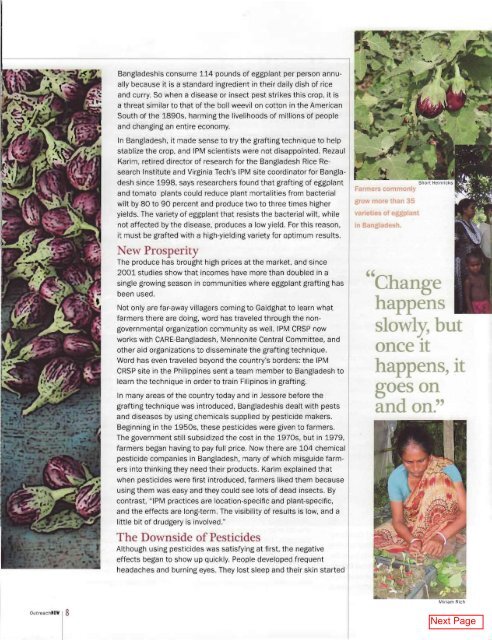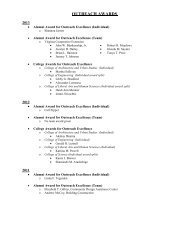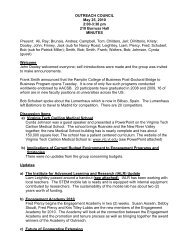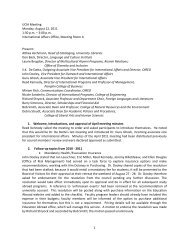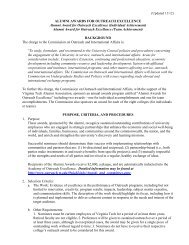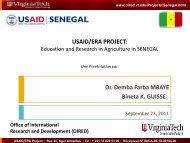Beautiful Gardens - Outreach & International Affairs - Virginia Tech
Beautiful Gardens - Outreach & International Affairs - Virginia Tech
Beautiful Gardens - Outreach & International Affairs - Virginia Tech
- No tags were found...
You also want an ePaper? Increase the reach of your titles
YUMPU automatically turns print PDFs into web optimized ePapers that Google loves.
Bangladeshis constJme 114 pounds of eggplant per person annuallybecause it is a standard ingredient in their daily dish of riceand curry. So when a disease or insect pest strikes this crop, it isa threat similar to that of the boll weevil on cotton in the AmericanSouth of the 1890s, harming the livelihoods of millions of peopleand changing an entire economy.In Bangladesh, it made sense to try the grafting technique to helpstablize the crop, and IPM scientists were not disappointed. RezaulKarim, retired director of research for the Bangladesh Rice ResearchInstitute and <strong>Virginia</strong> <strong>Tech</strong> 's IPM site coordinator for Bangladeshsince 1998, says researchers found that grafting of eggplantand tomato plants could reduce plant mortalities from bacterialwilt by 80 to 90 percent and produce two to three times higheryields. The variety of eggplant that resists the bacterial wilt, whilenot affected by the disease, produces a low yield. For this reason,it must be grafted with a high-yielding variety for optimum results.New ProsperityThe produce has brought high prices at the market, and since2001 studies show that incomes have more than doubled in asingle growing season in communities where eggplant grafting hasbeen used.Not only are far-away villiagers coming to Gaidghat to learn whatfarmers there are doing, word has traveled through the nongovernmentalorganization community as well. IPM CRSP nowworks with CARE-Bangladesh, Mennonite Central Committee, andother aid organizations to disseminate the grafting technique.Word has even traveled beyond the country's borders: the IPMCRSP site in the Phi1lippines sent a team member to Bangladesh tolearn the technique in order to train Filipinos in grafting.In many areas of the country today and in Jessore before thegrafting technique was introduced, Bangladeshis dealt with pestsand diseases by using chemicals supplied by pesticide makers.Beginning in the 1950s, these pesticides were given to farmers.The government still subsidized the cost in the 1970s, but in 1979,farmers began having to pay full price. Now there are 104 chemicalpesticide companies in Bangladesh, many of which misguide farmersinto thinking they need their products. Karim explained thatwhen pesticides were first introduced, farmers liked them becauseusing them was easy and they could see lots of dead insects. Bycontrast, "IPM practices are location-specific and plant-specific,and the effects are long-term. The visibility of results is low, and alittle bit of drudgery is involved."The Downside ofPesticidesAlthough using pesticides was satisfying at first, the negativeeffects began to show up quickly. People developed frequentheadaches and burning eyes. They lost sleep and their skin startedgrow more than 35var etle5 of ggplantin Bangladesh,"Changehappensslowy, butonce ithappens, itgoes onand on."<strong>Outreach</strong>NOW 8


